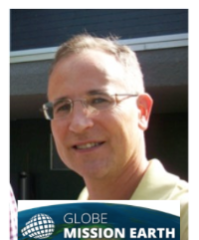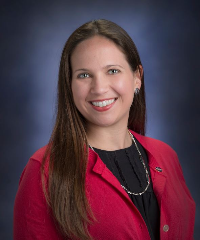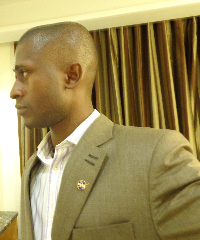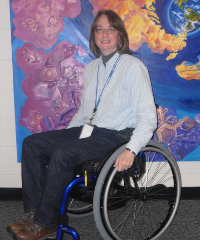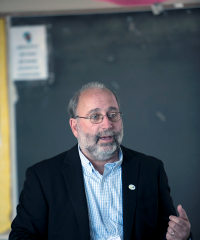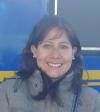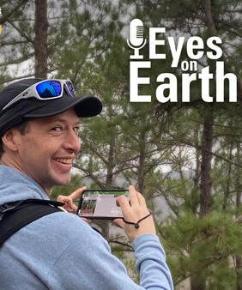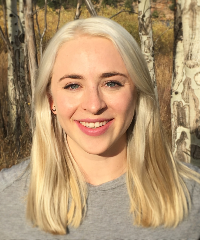Community Blogs
Community Blogs
Discover how the GLOBE community is engaging in all things GLOBE through the community blog posts below.
Learn how to create a GLOBE community blog post.
Filter By:
Blogs List
We are in the middle of our December observations for the Urban Heat Island Effect/Surface Temperature Field Campaign. 69 schools have entered 1323 observations. As developer of the surface temperature protocol I wanted to thank everyone who has taken observations . It is your data that will allow other students to create interesting research projects as well as providing a database for me and my students to conduct research. We have schools all over the world taking surface temperature observations to contribute to the campaign. I want to talk about problems some schools are having ...
Read More »
Posted in:
The GLOBE Clouds team loves coming up with ways to help students and teachers identify clouds. I've been blessed to visit a number of 4th grade full inclusion classrooms and want to share my quick cloud ID and data collection activity outline!
Anchor question: Do all clouds look the same, even from space?
Goal: Students identify, collect and submit cloud observations by using their own notes and clues for each possible cloud type.
Objectives: Students will,
(A) Recognize that clouds are part of the water cycle.
(B) Investigate cloud types ...
Posted in:
Curriculum:
STEM
GLOBE Science Topics:
SCIENTIST SKILLS
GLOBE PROTOCOLS
Learning Activities:
ATMOSPHERE AND CLIMATE
Primary Audience:
TRAINERS
TEACHERS
Teacher's Guide:
UPPER PRIMARY: 3-5
RESOURCES
The GLOBE Clouds team at NASA Langley Research Center in Hampton, VA would like to highlight the top observers of 2017! Thank you to all observers for submitting your observations and using the satellite matching of data.
Top 10 cloud observers for 2017
Observer
School
Country
Total Observations
Valentina Langiene
Zemynos pro-gimnazium
Lithuania
1201
Ahmad Alhefzi
As-Siddiq Secondary School at ...
Posted in:
By Olawale Oluwafemi (Femi), (Nigerian Space Agency) and DeStaerke Danielle (CNES)
The primary objective of every research project is not only about what you discover but also how do you communicate your discoveries to the interested audience. Delivering either a poster or oral presentation at a scientific meeting is not an easy task, but my passionate friend Danielle and I will present tips that will assist GLOBE Students and Teachers to deliver good scientific presentations.
Plate 1: Femi delivering poster presentation during GLOBE Annual Meeting at Estes Park, ...
Posted in:
Curriculum:
STEM
EDUCATION RESEARCH
Event Topics:
GLOBE LEARNING EXPEDITIONS
SCIENCE SYMPOSIA AND FAIRS
COMPETITIONS
GLOBE Science Topics:
MEETINGS/CONFERENCES
GLOBE Working Groups:
SCIENCE WORKING GROUP
EDUCATION WORKING GROUP
News Topics:
VIRTUAL SCIENCE FAIR
MEETINGS
Primary Audience:
TRAINERS
TEACHERS
STUDENTS
SCIENTISTS
Learning science involves learning important concepts, conducting experiments to see first-hand how researchers discovered and confirmed some elements of science concepts, and learning how to think scientifically. With this complete approach to learning science, students are well-prepared to deal with the natural world around them and to make wise decisions when confronted with various choices. The ability to think scientifically is a valuable skill in almost all aspects of life and doing science teaches scientific habits of mind.
Students can do science through research projects ...
Posted in:
Curriculum:
STEM
SCIENCE AND MATH
GLOBE Science Topics:
SCIENTIST SKILLS
GENERAL SCIENCE
BACKYARD SCIENCE
GLOBE Working Groups:
SCIENCE WORKING GROUP
Investigation Areas:
ATMOSPHERE
EARTH AS A SYSTEM
HYDROSPHERE
PEDOSPHERE (SOIL)
BIOSPHERE
News Topics:
VIRTUAL SCIENCE FAIR
COMPETITIONS
Primary Audience:
TEACHERS
STUDENTS
PARTNERS
COUNTRY COORDINATORS
Gathering data
Once you have determined what protocols to use for your project, you will need to develop a plan for gathering the data. It might consist of using automated data collection or making your own measurements. Also, it may include finding data taken by others, such as when you compare your observations with those of another GLOBE school.
Automated Data Collection
If you are using an automated data collection device or devices, verify that the data are being recorded properly before your official testing timeframe. You will want to monitor that the data are being ...
Posted in:
Curriculum:
STEM
EDUCATION RESEARCH
SCIENCE AND MATH
TECHNOLOGY
Event Topics:
SCIENCE SYMPOSIA AND FAIRS
GLOBE Science Topics:
SCIENTIST SKILLS
MEETINGS/CONFERENCES
GLOBE Working Groups:
SCIENCE WORKING GROUP
EDUCATION WORKING GROUP
News Topics:
VIRTUAL SCIENCE FAIR
Primary Audience:
TEACHERS
STUDENTS
Teacher's Guide:
SECONDARY: 9-12
MIDDLE: 6-8
Exciting new VR and AR applications of Geovisualizations are be developed at the Institute for Earth Observations at Palmyra Cove. You can check a quick demo on our Partnership's website www.palmyracove.org or take a look at the Mission Earth webinar @ https://www.youtube.com/watch?v=nCgntUpqcFg
Posted in:
The Urban Heat Island field campaign October version turned out to be a great success. Many schools took observations and entered them onto the GLOBE website. Remember, we are looking at the urban heat island in the seasons, October, December and March. Forty-three schools entered data in the month of October. If you haven't entered your data yet, please do soon. You can see on the map below that there were observations taken across the world. The size of the dot represents the total number of observations taken at the site. There has been great participation from Saudi Arabia, ...
Posted in:
By Claudia Caro and Erika Podest
Curiosity is a natural characteristic of all people, especially the young. It is the first step for a child to build knowledge, and I am sure we can all remember as children asking what?, why?, where?, and numerous other questions as we tried to learn new things.
Unfortunately, as children grow up, this natural curiosity slowly fades. Why is this? We don’t exactly know, but it might be that as children grow older they think they know all the answers or because most school systems are structured to teach by providing answers rather than ...
Posted in:
Curriculum:
STEM
EDUCATION RESEARCH
SCIENCE AND MATH
TECHNOLOGY
Event Topics:
SCIENCE SYMPOSIA AND FAIRS
GLOBE Science Topics:
SCIENTIST SKILLS
MEETINGS/CONFERENCES
GLOBE Working Groups:
SCIENCE WORKING GROUP
EDUCATION WORKING GROUP
News Topics:
VIRTUAL SCIENCE FAIR
Primary Audience:
TEACHERS
STUDENTS
Teacher's Guide:
SECONDARY: 9-12
MIDDLE: 6-8
Having students collaborate on projects has been a great potential of the GLOBE Program. Through GLOBE Mission EARTH, students in Detroit, Michigan and Shageluk, Alaska interacted over the Internet. Their teachers worked together with GLOBE Mission EARTH to plan the exchange.
Students from Randy Smith Middle School, Fairbanks, Alaska, Carol Scott.
Thirkell Elementary School 5th grade, Detroit Michigan - Teacher Connie Atkisson
Students were asked to generate questions to ask each other before the web meeting. They found that their houses were very similar. The ...
Posted in:
Authors: Claudia Caro and Olawale Oluwafemi (Femi)
Our participation in the International Virtual Science Symposium (IVSS) as judges has allowed us to learn more about the scientific experiences of students involved in the GLOBE Program. As members of the GLOBE Science Working Group with backgrounds in Geography and Biology, we would like to share our findings about the importance of the IVSS in the GLOBE community and give you some advice to empower your participation in this extraordinary yearly event.
Why an International Virtual Science Symposium?
Knowledge ...
Posted in:
Curriculum:
STEM
SCIENCE AND MATH
TECHNOLOGY
Event Topics:
SCIENCE SYMPOSIA AND FAIRS
GLOBE Working Groups:
SCIENCE WORKING GROUP
EDUCATION WORKING GROUP
Primary Audience:
TEACHERS
STUDENTS
COUNTRY COORDINATORS
Teacher's Guide:
SECONDARY: 9-12
MIDDLE: 6-8
GRADE LEVELS
When you start writing your GLOBE report for IVSS, it might be difficult because you might not sure where to start. We tend to start writing the Methods section first because it is something you did it yourselves and it should be relatively easy and straight forward to write. Second, you should write the Results section, do graphs, tables and texts (think of a best way to present your cool data to the whole world). Third, you should start writing the Introduction stating your hypotheses and predictions. The next step would be the Discussion section. It is funny to say but as scientists, ...
Posted in:
Curriculum:
STEM
EDUCATION RESEARCH
SCIENCE AND MATH
TECHNOLOGY
Event Topics:
MEETINGS
SCIENCE SYMPOSIA AND FAIRS
GLOBE Science Topics:
SCIENTIST SKILLS
MEETINGS/CONFERENCES
GLOBE Working Groups:
SCIENCE WORKING GROUP
EDUCATION WORKING GROUP
News Topics:
VIRTUAL SCIENCE FAIR
Primary Audience:
TEACHERS
STUDENTS
Teacher's Guide:
GRADE LEVELS
SECONDARY: 9-12
MIDDLE: 6-8
https://earthengine.google.com/timelapse/#v=52.02687,-9.54373,10.654,latLng&t=3.20
Posted in:
The journal Scientific American just published a blog about GLOBE. The post, titled " The GLOBE Program: Making the Case for K–12 Citizen Scientists " discusses several aspects of GLOBE, including our contributions and campaigns. As well, it helps explain our mission of providing the resources for students across the world to become citizen scientists.
"Contributing to global datasets not only gives students a chance to collect data that scientists can actually use, but allows them to compare their experiences and findings with other students around the world."
To read more ...
Posted in:
Event Topics:
CAMPAIGNS AND PROJECTS (IOPS, ETC)
OTHER
Field Campaigns:
EL NIÑO
SURFACE TEMPERATURE
GLOBE Science Topics:
SCIENTIST SKILLS
GLOBE PROTOCOLS
BACKYARD SCIENCE
Primary Audience:
TRAINERS
TEACHERS
STUDENTS
PARTNERS
SCIENTISTS
ALUMNI
COUNTRY COORDINATORS
Observations of daily precipitation have been a part of GLOBE from the beginning. At the start, GLOBE’s participation model was that schools would take measurement following all of the original 17 protocols. Atmosphere temperature, precipitation, cloud, and soil moisture measurements were to be collected daily at a site easily accessible to the school. A permanent installation of an instrument shelter containing a max/min thermometer mounted to a post along with a rain gauge was the expected norm with other measurements taken nearby. Daily temperature and precipitation measurements were ...
Posted in:
Field Campaigns:
EL NIÑO
GPM
GLOBE Science Topics:
GLOBE PROTOCOLS
GLOBE Working Groups:
SCIENCE WORKING GROUP
EDUCATION WORKING GROUP
Investigation Areas:
ATMOSPHERE
Primary Audience:
TRAINERS
TEACHERS
STUDENTS
PARTNERS
COUNTRY COORDINATORS
Teacher's Guide:
DOCUMENT TYPES
From the start, the measurement of daily maximum and minimum air temperature within one hour of local solar noon has been a key GLOBE protocol. The low cost approach was to use a U-tube thermometer housed in a wooden instrument shelter facing away from the equator. The U-shaped tube contained mercury with pins on either side of the mercury. As the air temperature warmed the pin on one side would move while the other pin stayed in place; when the air cooled, the pin on the other side would be pushed up. The pins were held in place by magnetized strips behind the thermometer tube so that ...
Posted in:
Curriculum:
STEM
TECHNOLOGY
GLOBE Science Topics:
EARTH AS A SYSTEM
EARTH SYSTEM SCIENCE
GLOBE PROTOCOLS
CLIMATE CHANGE
CLIMATE
GLOBE Working Groups:
SCIENCE WORKING GROUP
Investigation Areas:
ATMOSPHERE
Primary Audience:
TEACHERS
TRAINERS
STUDENTS
PARTNERS
SCIENTISTS
ALUMNI
COUNTRY COORDINATORS
Quaking aspens can grow in a wide range of environmental conditions. They can tolerate a wide variety of variations in climate and environmental conditions including slope, moisture, surrounding vegetation, and soil ( https://www.fs.fed.us/wildflowers/beauty/aspen/ecology.shtml ). I found this information with a simple web search. But, before there was access to infinite articles, websites, and papers all a click away, scientists had to figure out growth trends using data. So, before I decided to do a web search about the environmental conditions of aspen habitats (my memorized aspen ...
Posted in:
Event Topics:
SCIENCE SYMPOSIA AND FAIRS
GLOBE Science Topics:
SCIENTIST SKILLS
Investigation Areas:
EARTH AS A SYSTEM
HYDROSPHERE
PEDOSPHERE (SOIL)
ATMOSPHERE
BIOSPHERE
News Topics:
VIRTUAL SCIENCE FAIR
Primary Audience:
TEACHERS
STUDENTS
I recently had the pleasure of meeting a GLOBE student named Aspen. I was excited because my favorite type of tree is Aspen (Quaking Aspen to be more specific, Populus tremuloides to be even more specific), and I was able to tell her some of the fun facts about her namesake.
My favorite thing about aspens is their bark. The white powder on it can act as sunscreen. It’s only about an SPF of 5 but it’s still pretty cool. The bark also contains chloroplasts which means it can photosynthesize, making it one of the few deciduous trees that do not solely rely on leaves for ...
Posted in:
Investigation Areas:
BIOSPHERE
Primary Audience:
TRAINERS
TEACHERS
STUDENTS
PARTNERS
SCIENTISTS
ALUMNI
COUNTRY COORDINATORS
In my previous blog post, I showed the results of my surface temperature experiment. It was a great way to highlight some of the practical ways to use science, and it was yet another way for me to talk about my puppy. My experiment and accompanying blog was straightforward enough. I identified a problem, I designed an experiment, collected data, and presented the results. This is how science is done, right?! With years of experiment experience behind me, this should have been a very fast and easy task, but I had one problem that I forgot to account for, my Attention Deficit Disorder. ...
Posted in:
GLOBE Science Topics:
BACKYARD SCIENCE
SCIENTIST SKILLS
EARTH AS A SYSTEM
EARTH SYSTEM SCIENCE
Investigation Areas:
SURFACE TEMPERATURE
These are the results from my surface temperature experiment that I discussed in my previous blog post (same title, part 1).
Results and Conclusion :
Figure 2: Graph of average surface temperatures of the three surfaces over three days including air temperature data lines.
My results show that my hypothesis was half right (remember, it’s ok if your data results do not match your hypothesis!). During the day, asphalt was the hottest, concrete was in the middle, and grass was the coolest. The surface temperatures of all three dropped at night, however, I was ...
Posted in:
GLOBE Science Topics:
BACKYARD SCIENCE
DATA INCLUDED
GLOBE PROTOCOLS
EARTH SYSTEM SCIENCE
SCIENTIST SKILLS
Investigation Areas:
SURFACE TEMPERATURE
News Topics:
VIRTUAL SCIENCE FAIR
—
20 Items per Page






